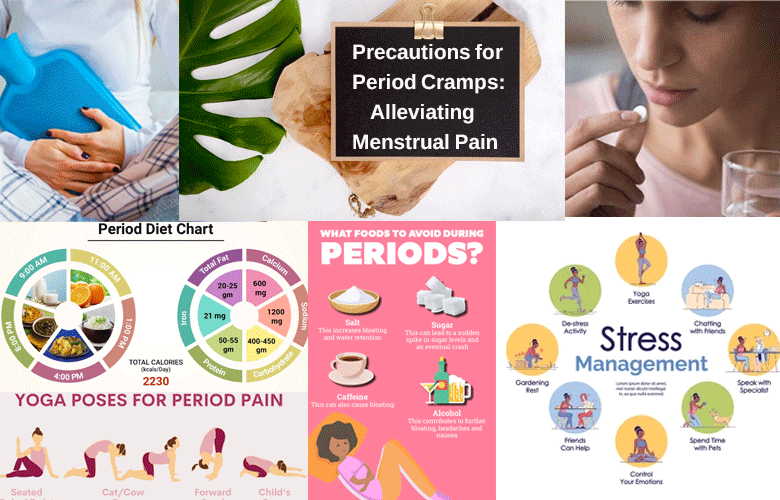Here are some precautions that may help alleviate period cramps:
Exercise:
Gentle exercise like yoga, walking, and stretching can help reduce menstrual pain and cramps by increasing blood flow to the pelvic area.
Heat therapy:
Applying heat to the lower abdomen can help relax muscles and ease menstrual cramps. You can use a hot water bottle or a heating pad for this purpose.
Over-the-counter pain relief:
Taking over-the-counter pain relief medication like ibuprofen or aspirin can help reduce menstrual pain and inflammation. Always follow the recommended dosage and check with a doctor if you have any concerns.
Dietary changes:
Eating a healthy, balanced diet can help reduce menstrual pain and cramps. Foods like fruits, vegetables, whole grains, and lean proteins can help reduce inflammation and alleviate symptoms.
Avoiding certain foods:
Some foods like caffeine, alcohol, and processed foods can exacerbate menstrual cramps. It’s best to avoid or limit these foods during your period.
Stress management:
Stress can contribute to menstrual cramps, so finding ways to manage stress, such as meditation, deep breathing exercises, or a relaxing bath, can help alleviate symptoms.
It’s important to note that severe or persistent menstrual pain may be a sign of an underlying condition, such as endometriosis or uterine fibroids. If you experience severe or persistent menstrual pain, speak to a healthcare provider for advice.
